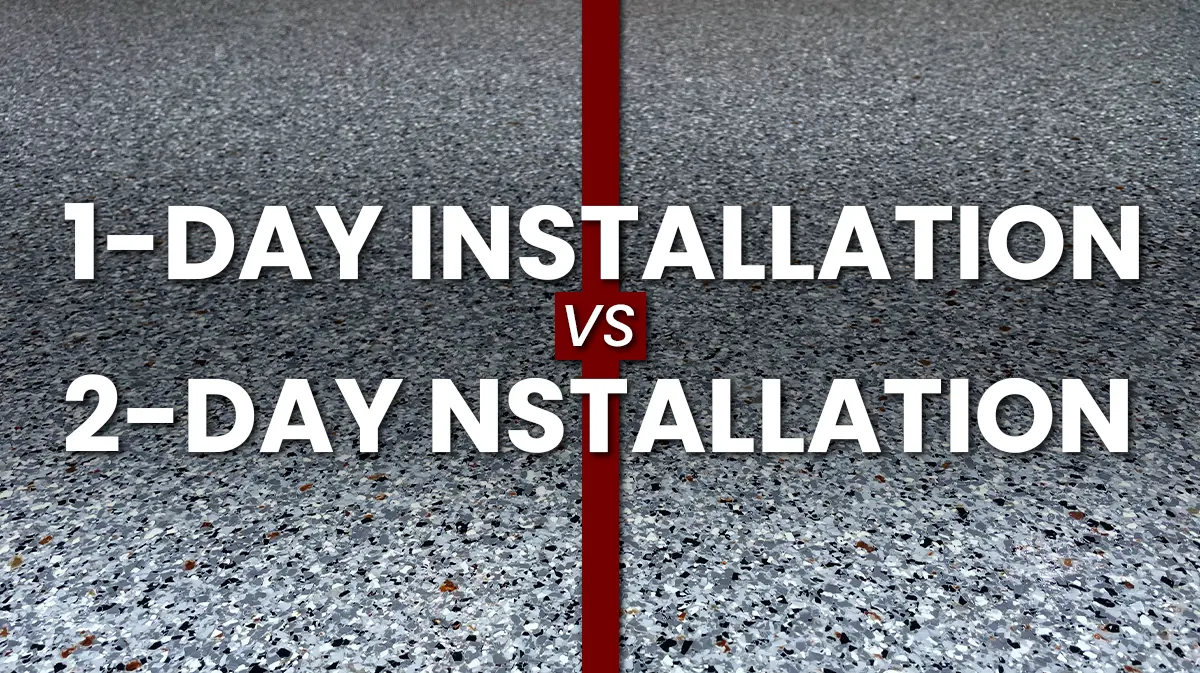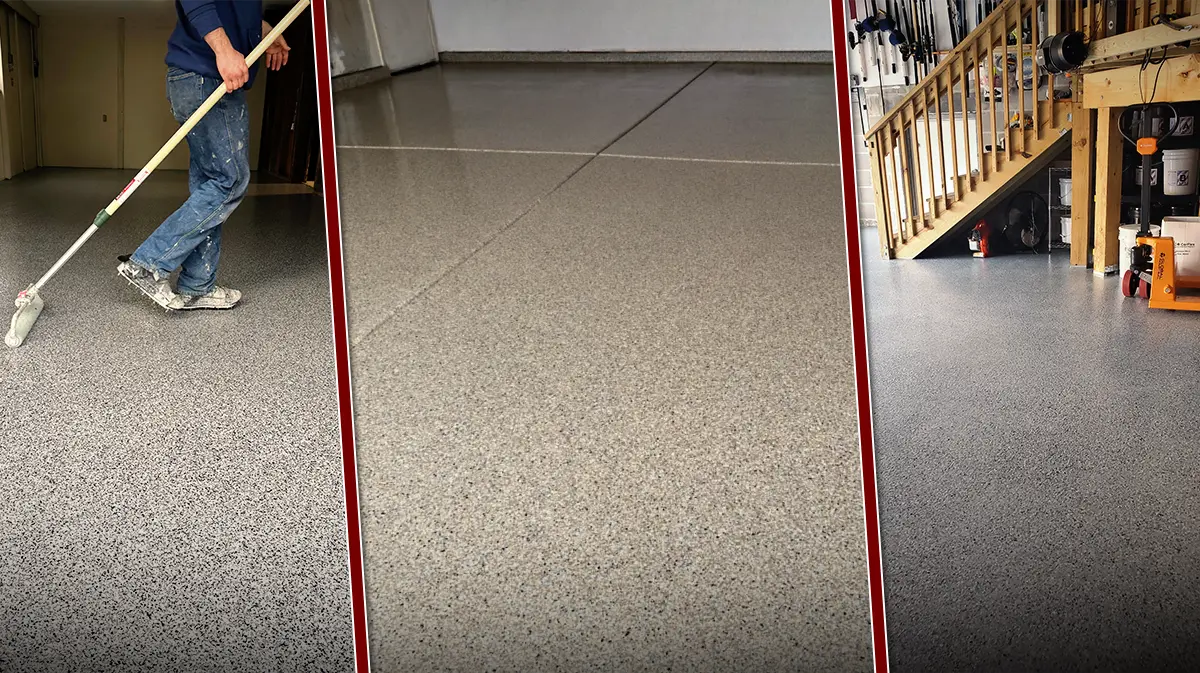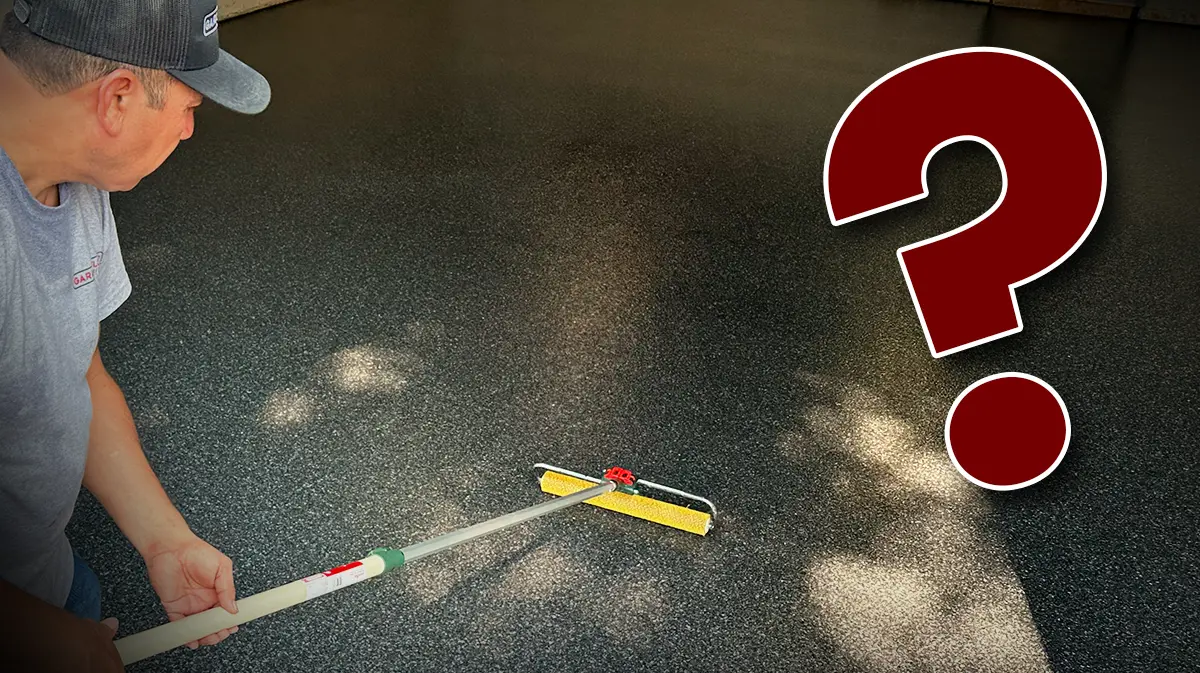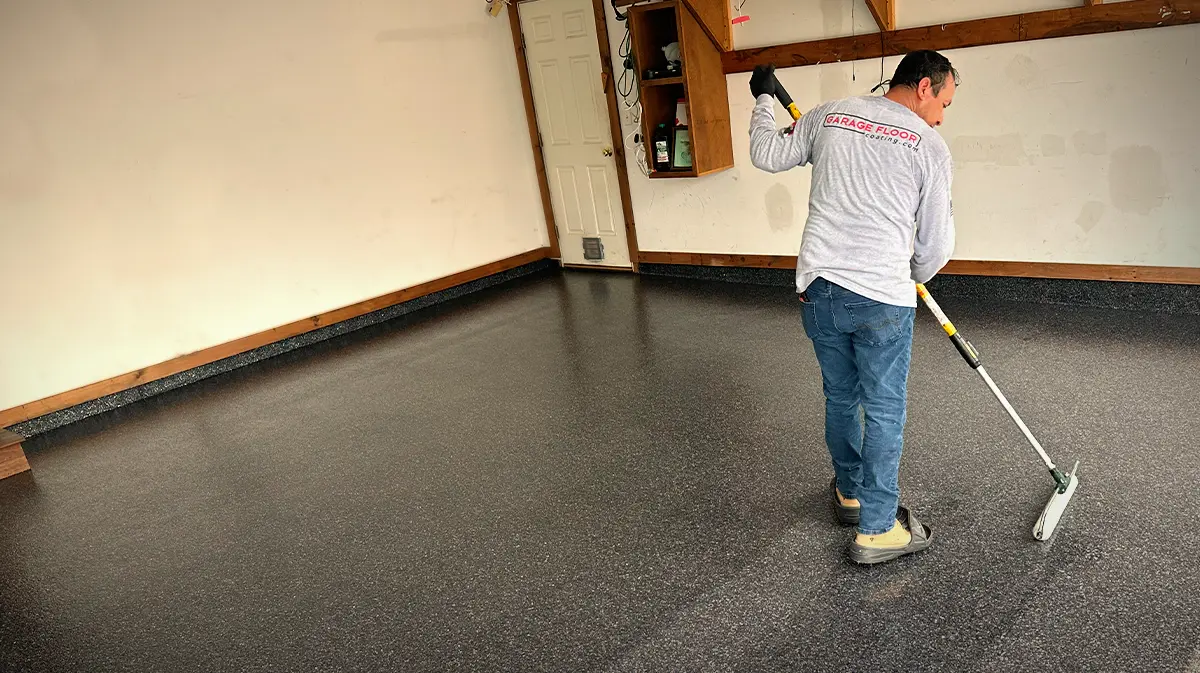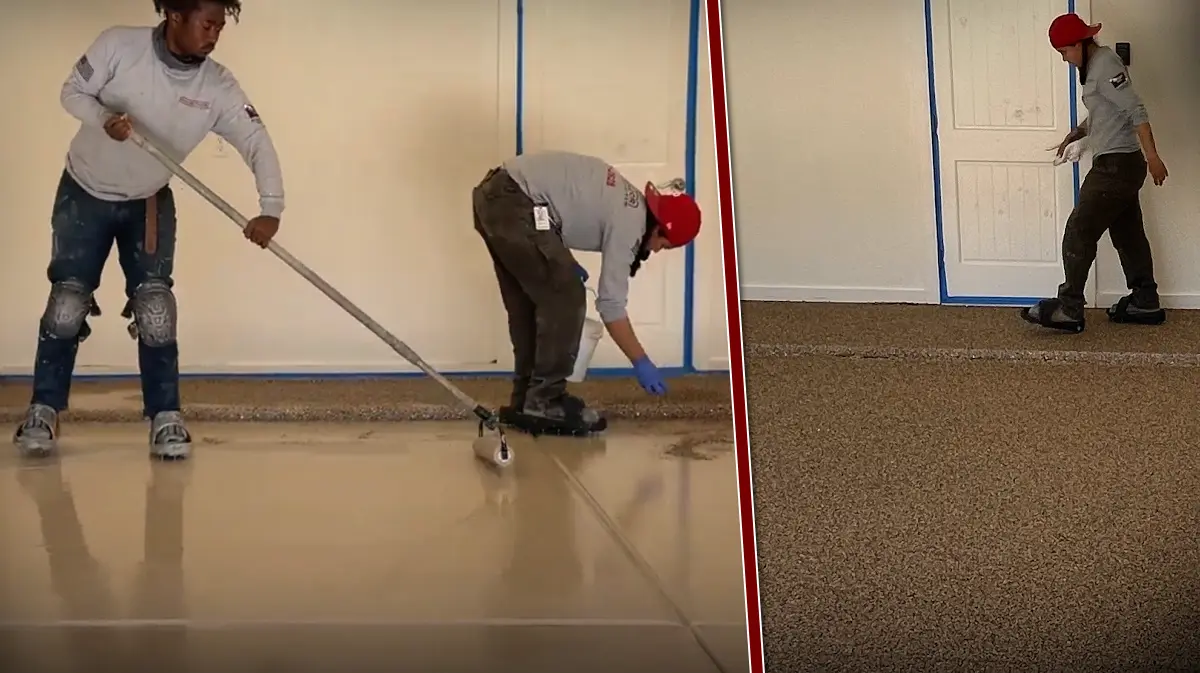Let’s say you’re looking into garage floor coatings in Michigan, which means you’ve probably noticed that there are two big choices. Firstly, the speedy 1-day garage floor system and secondly, the more involved 2-day process. It’s easy to get tempted by the 1-day option. Who doesn’t like the idea of being done with a project faster? You just have to remember: when it comes to something that’s going to take a beating from Michigan’s weather, heavy foot traffic, and hot tires, it’s worth knowing what you’re really getting into.
What’s the Deal with 2-Day Coatings?
The 2-day system is kind of like the gold standard when it comes to garage floor coatings. It all starts with a 100%-solids epoxy primer. Now, this isn’t just any primer—it’s specifically designed to bond with concrete and protect it from moisture. Without that epoxy primer, moisture from the ground can work its way up into the concrete, which can lead to all sorts of problems like peeling or cracking. And once that happens, it’s a nightmare to fix.
Once that first layer is down, and the chosen flakes broadcast into the “wet” primer coat, it’s followed by two polyaspartic topcoats. Polyaspartic is the real heavy lifter here. It gives your garage floor that tough, durable finish that can handle just about anything: UV rays, chemical spills, even the heat that comes off your car’s tires in the summer. These coatings are also stain-resistant, which is perfect if you like to work on your car or do projects that can get a little messy.
One big thing to note is that polyaspartic topcoats aren’t just slapped on—they’re 100%-solids, meaning they don’t shrink as they cure. You’re left with a thick, strong layer that’ll keep your garage floor looking good for years.
What’s the Catch with 1-Day Garage Floor Systems?
Now, the 1-day system. The appeal is obvious: quick installation and you’re back to using your garage almost immediately. But here’s where things start to go sideways. Instead of taking the time to use a slower-curing epoxy primer, 1-day systems use a thin coat of polyurea-polyaspartic directly on the concrete. And while polyaspartic is great when used as a topcoat, it’s not designed to handle moisture coming up from the ground.
What happens when you skip the epoxy primer? Over time, moisture from the concrete starts to mess with the thin, poorly penetrating polyurea-polyaspartic layer. Cracks, peeling, and even bubbling can start to appear, especially in Michigan’s fluctuating climate. And since a lot of 1-day systems don’t include a warranty for moisture-related issues, that’s something you’ll end up dealing with on your own. Plus, those thin layers of coating don’t hold up as well over time, so you might find yourself needing a redo sooner than you’d like.
Why the 2-Day Process Wins Every Time
One of the key things that makes the 2-day process so much more durable is how the epoxy primer interacts with the concrete. Concrete is naturally porous, meaning water vapor can rise through it from the ground below. By applying a slower-curing, 100%-solids moisture-mitigating epoxy, you’re allowing the time for the coating to properly penetrate and bond with the concrete substrate. It creates a moisture vapor barrier that resists moisture wicking up through the concrete (and resulting high hydrostatic pressure). Without this step, especially in areas like Michigan where moisture is always a factor, the chances of your garage floor coating failing are much higher.
The dual 100%-solids polyaspartic topcoats applied in a 2-day system are UV-resistant, so they won’t fade or yellow even after years of sun exposure. And since Michigan’s summers can get pretty intense, that extra UV protection is no small thing.
At the end of the day, a 2-day system gives you a thicker, more protective coating. It takes a little longer, but it’s well worth it if you want an epoxy floor that’s going to last through Michigan’s tough winters, humid summers, and everything in between.

